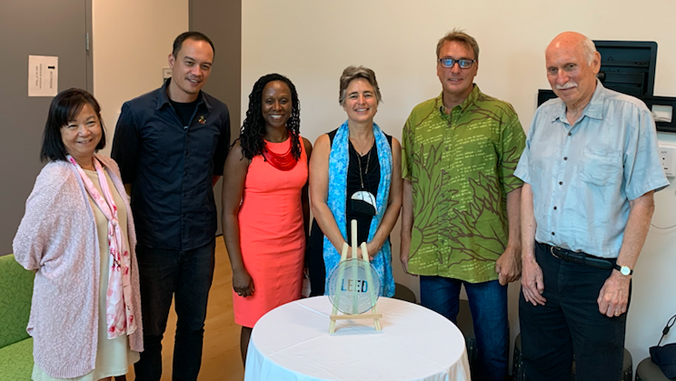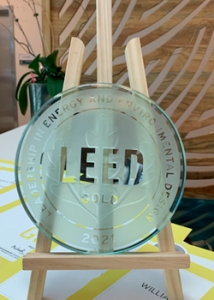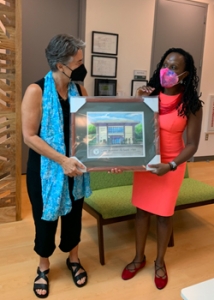
The University of Hawaiʻi at Mānoa William S. Richardson School of Law clinical building has attained official Gold-level Leadership in Energy and Environmental Design (LEED) certification.
In April, Dean Camille Nelson joined former Dean Avi Soifer and Professor Denise Antolini, faculty, and partners to unveil the official LEED certification plaque awarded by the U.S. Green Building Council to the UH law school clinical building.

The clinical building incorporates extensive LEED features, including on-site solar photovoltaic (PV) panels, diverting 86% of project construction waste from landfills, and energy reduction measures, such as exterior shading, LED lighting and occupancy sensors, resulting in approximately 31% in energy cost savings. Indoor potable water use has been reduced with low-flow and high efficiency fixtures, low-water landscaping has a focus on native plants, and 48% of building materials used were locally sourced from within the region.
“We focused on choosing sustainability features to minimize the building’s environmental footprint while managing costs. I am particularly proud that the building features extensive use of natural lighting, used non-toxic materials for the interior that improves occupant air quality, diverted 86% of the construction waste from the landfill and has solar panels that generate about 14% of the building’s power needs,” said Antolini. “We hope the building inspires others in our community to strive for buildings that are healthier for humans and the planet. The achievement of LEED Gold Certification for the clinical building beautifully reflects the core value of sustainability that is part of the mission of our UH Mānoa campus and the law school.”
The gold rating signifies the extraordinary effort of all those involved in the planning, design and construction of the clinical building to strive for a high level of sustainability. Richardson’s clinical building, which was unveiled in 2019, was a combined effort of the UH law school, UH administrators and the state legislature. The sustainable, state-of-the-art building took more than a decade to bring to fruition; it first broke ground in 2016.

LEED certified projects must first undergo a verification and review process by the Green Business Certification Inc. and be awarded points that correspond to a level of LEED certification, which is a globally recognized symbol of sustainability achievement and leadership.
Nelson said, “This LEED certification is a testament to the hard work and vision of many, most notably former Associate Dean, Professor Denise Antolini. Together with former dean, Professor Avi Soifer, the University of Hawaiʻi Sustainability Office, and the wonderful architects involved, they envisioned, and led the way for the creation of what is an inviting building for experiential learning and service to the community. They have set a very high standard, one that many will follow as we think about our built environments and their impact.”
This recognition is an example of UH Mānoa’s goal of Building a Sustainable and Resilient Campus Environment: Within the Global Sustainability and Climate Resilience Movement (PDF), one of four goals identified in the 2015–25 Strategic Plan (PDF), updated in December 2020.

